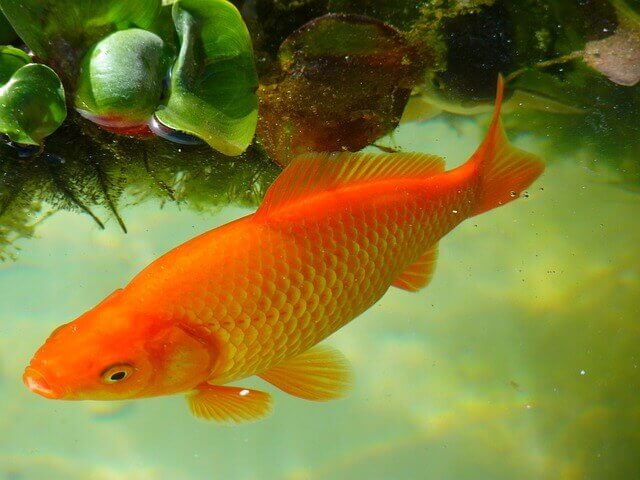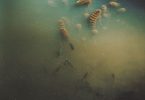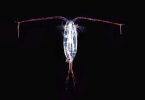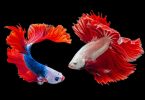Table of Contents
Have you ever wondered if goldfish have stomach? It’s a common question asked by many people who own these popular pets.
Goldfish are known for their bright colors, playful personalities, and their ability to survive in a variety of environments. But do they have the same digestive system as other fish and animals?
The answer is yes, goldfish do have stomachs. However, their stomachs are not like the stomachs of other animals.
Goldfish have a unique digestive system that allows them to break down and absorb food differently. Unlike humans and other animals, goldfish don’t have a separate stomach and intestine.
Instead, their digestive system is a long, coiled tube that runs from their mouth to their anus. This means that the food they eat is processed differently than other animals, and it can take longer for them to digest their food.
Anatomy of Goldfish
Goldfish are a popular freshwater fish that are commonly kept as pets. They are known for their bright colors and unique body shape. To better understand goldfish, it is important to examine their anatomy.
Digestive System
Goldfish have a simple digestive system, consisting of a mouth, esophagus, stomach, intestine, and anus. The mouth is located at the front of the fish and is used for taking in food.
The esophagus connects the mouth to the stomach and is responsible for moving food down into the digestive tract.
The intestine is where most of the digestion and absorption of nutrients takes place. The anus is located at the end of the digestive tract and is where waste is eliminated from the body.
Stomach Structure
Goldfish do have stomachs, although they are not as well-defined as in other animals. The goldfish stomach is a muscular pouch that is located between the esophagus and the intestine. It is responsible for breaking down food into smaller particles and mixing it with digestive enzymes.
Goldfish stomachs are relatively small compared to their body size, which means they need to eat frequently to maintain their energy levels.
The size of the stomach can vary depending on the size of the fish and the amount of food that has been consumed.
In conclusion, goldfish do have stomachs, although they are not as well-defined as in other animals. The digestive system of goldfish is relatively simple, consisting of a mouth, esophagus, stomach, intestine, and anus.
Understanding the anatomy of goldfish can help pet owners provide the proper care and nutrition for these beloved aquatic pets.
Feeding Habits of Goldfish
Goldfish are omnivorous fish, meaning they eat both plants and animals. They have a varied diet, and their feeding habits can depend on factors such as age, size, and environment. In this section, we will explore the types of food goldfish eat and their digestion process.
Types of Food
Goldfish eat a variety of foods, including:
- Pellets: Commercially available pellets are a popular food choice for goldfish. They come in different sizes and are formulated to meet the nutritional needs of goldfish.
- Flakes: Flakes are another popular food choice for goldfish. They are easy to feed and can be found in many pet stores.
- Vegetables: Goldfish enjoy eating vegetables such as lettuce, spinach, and peas. These can be fed raw or cooked.
- Live food: Goldfish enjoy eating live food such as brine shrimp, bloodworms, and daphnia. These can be found in many pet stores or can be cultured at home.
Digestion Process
Goldfish do have a stomach, but it is not as well-defined as in other animals. The stomach is a dilated part of the digestive tract where food is temporarily stored and mixed with digestive juices. Goldfish have a short digestive tract, and food moves quickly through their system.
The digestion process in goldfish begins in the mouth, where food is broken down by teeth located in the pharynx.
From there, food moves to the esophagus and then to the stomach. In the stomach, food is mixed with digestive juices and broken down further.
After leaving the stomach, food moves to the intestine, where nutrients are absorbed into the bloodstream. The remaining waste is then excreted through the anus.
In conclusion, goldfish have a varied diet and can eat both plants and animals. They have a short digestive tract and a less-defined stomach than other animals.
Understanding the feeding habits and digestion process of goldfish can help you provide them with a healthy and balanced diet.
Factors Affecting Digestion
If you are wondering whether goldfish have stomachs, the answer is no, they do not have a true stomach. Instead, their digestive system is a straight tube that runs from their mouth to their anus. This means that goldfish rely on other factors to aid in their digestion process.
Water Quality
The quality of the water that your goldfish live in can have a significant impact on their digestion. Poor water quality can lead to stress, which can cause digestive issues.
Additionally, high levels of ammonia and nitrites in the water can harm the beneficial bacteria in the goldfish’s gut, which can lead to digestive problems.
To ensure that your goldfish have optimal water quality for digestion, you should regularly test the water parameters and perform water changes as needed. Keeping the water clean and free of harmful chemicals will help to promote healthy digestion.
Temperature
The temperature of the water can also affect the digestion of your goldfish. Goldfish are cold-water fish, and their digestive system works best in water temperatures between 65-72°F (18-22°C).
If the water is too cold, the goldfish’s metabolism will slow down, leading to slower digestion and potential health problems.
On the other hand, if the water is too warm, the goldfish’s metabolism will speed up, leading to faster digestion, which can cause issues with nutrient absorption.
To ensure that your goldfish have the optimal water temperature for digestion, you should use a thermometer to monitor the water temperature and adjust the temperature as needed.
Feeding Frequency
The frequency at which you feed your goldfish can also impact their digestion. Overfeeding can lead to digestive issues, as the goldfish’s digestive system may not be able to process all of the food.
This can lead to constipation, bloating, and other health problems. Underfeeding, on the other hand, can lead to malnutrition and stunted growth.
To ensure that your goldfish have the right amount of food for optimal digestion, you should feed them small amounts of food several times a day.
This will allow their digestive system to process the food more efficiently and reduce the risk of digestive issues.
In summary, while goldfish do not have a true stomach, several factors can affect their digestion. Maintaining good water quality, ensuring the right water temperature, and feeding your goldfish the right amount of food can all help to promote healthy digestion and prevent digestive issues.
Possible Health Issues
Goldfish are generally hardy and easy to care for, but like any other living creature, they can develop health issues. Here are some possible health issues that goldfish can experience:
Swim Bladder Disease
Swim bladder disease is a common health issue that affects goldfish. It occurs when the swim bladder, a gas-filled organ that helps the fish regulate its buoyancy, becomes inflamed or infected.
Symptoms of swim bladder disease include difficulty swimming, floating upside down, or sinking to the bottom of the tank.
Swim bladder disease can be caused by a variety of factors, including overfeeding, constipation, bacterial infections, and genetic predisposition.
Treatment options include fasting the fish for a few days, adjusting the water temperature, and feeding the fish a diet that is high in fiber.
Constipation
Constipation is another common health issue that affects goldfish. It occurs when the fish is unable to pass its waste properly, leading to a buildup of fecal matter in the intestines. Symptoms of constipation include loss of appetite, lethargy, and bloating.
Constipation can be caused by a variety of factors, including overfeeding, feeding the fish a diet that is too high in protein, and water that is too cold.
Treatment options include fasting the fish for a few days, feeding the fish a diet that is high in fiber, and adjusting the water temperature.
Bloating
Bloating is a common symptom of both swim bladder disease and constipation. It occurs when the fish’s abdomen becomes swollen due to a buildup of gas or fecal matter. Bloating can be uncomfortable for the fish and can make it difficult for them to swim properly.
Treatment options for bloating include fasting the fish for a few days, adjusting the water temperature, and feeding the fish a diet that is high in fiber. It’s important to monitor your fish closely and seek veterinary care if their condition does not improve.
In conclusion, goldfish can experience a variety of health issues, including swim bladder disease, constipation, and bloating.
By monitoring your fish closely and providing them with a healthy diet and environment, you can help prevent these issues from occurring.







